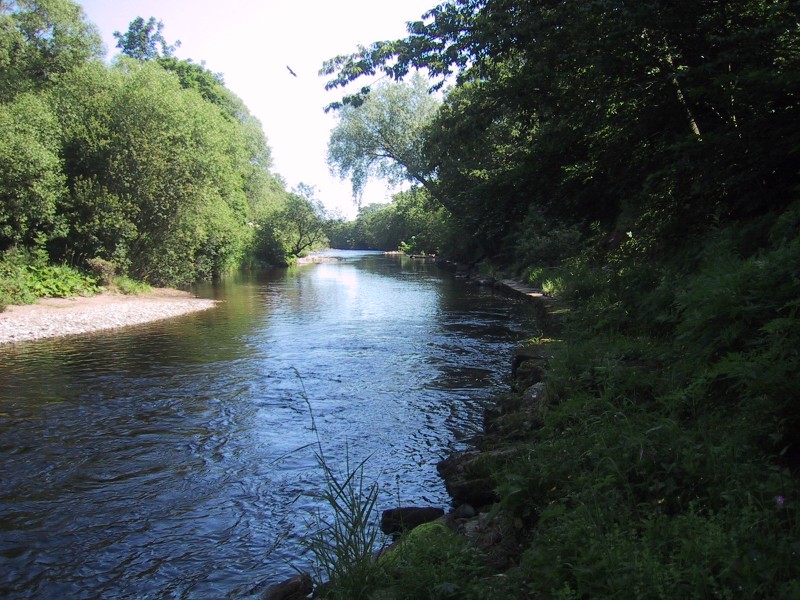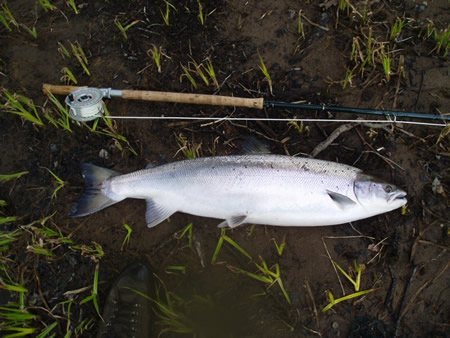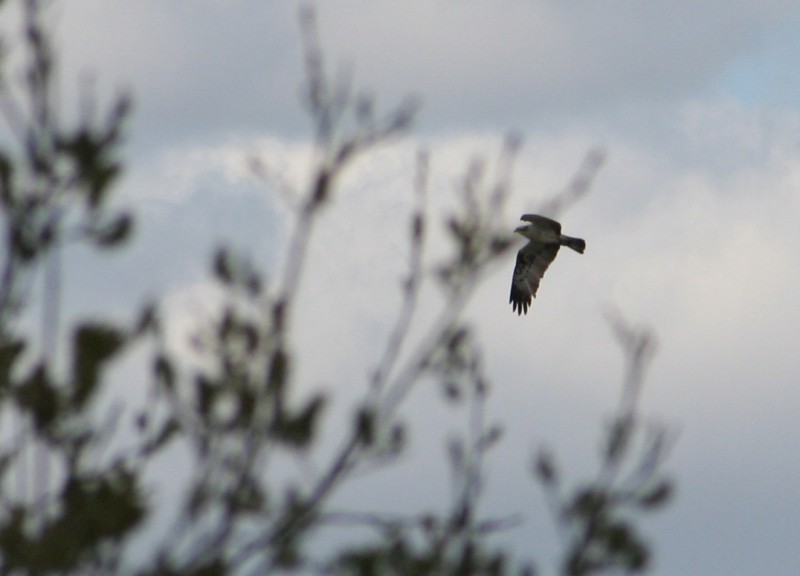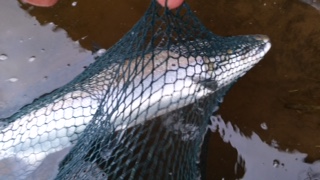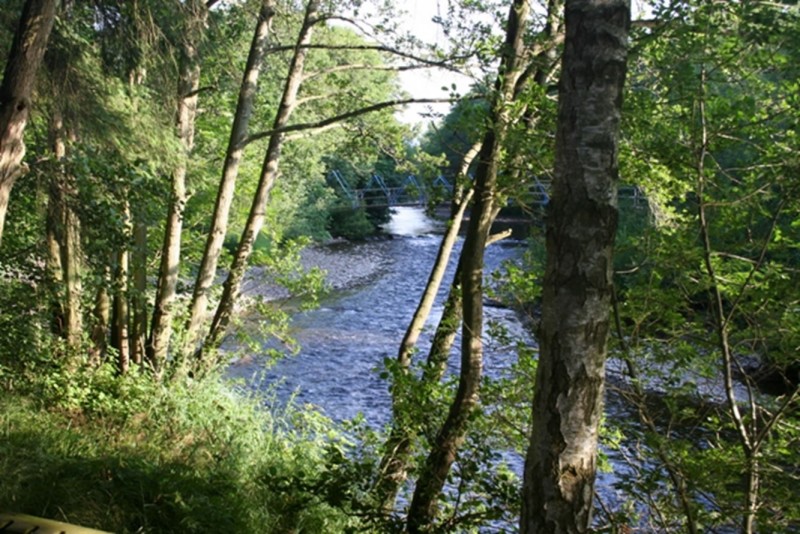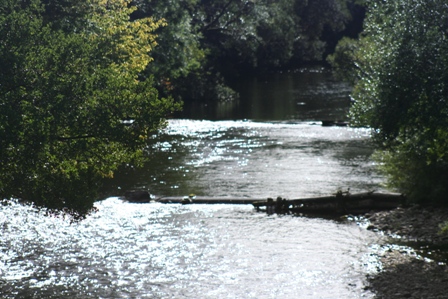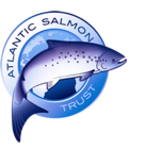A MIDWINTER GLOAMING VISIT TO RED BRAE
I walk the mile to Red Brae every day to give my two ageing Labradors their constitutional, not to mention the same for their master. At this time of year the river is deceptively quiet. At the winter solstice one could be forgiven for thinking that the river sleeps….
The confluence of the Lemno Burn with the South Esk provides a perfect vantage point for looking down the Red Brae. The ambience is much enhanced by the original FCW hut, which, like a Grimms Fairy Tale woodcutter’s dwelling, serves to keep our visitors warm and dry, or a place to sleep through the quiet hours of the night, depending on the time of year.
The view from ‘The Broch’ in the summer
My favourite place is the stone circle, which we call ‘The Broch’, like a winkle shell, where there is a stone seat. From there is an unrivalled view of the RB Wall right down into the tail of the pool, Kirkinn and the head of Pheasantry. That view enables the observer to see fish entering the pool, after which they often show briefly at the end of the Wall as they either settle into a lie, or prepare to move upstream through the neck of the pool into Craigo Stream and on upriver.
An aspect of sitting on the stone bench at the ‘ Broch’ is that the viewer is concealed and in a perfect position to witness wildlife movement. The Broch is slightly raised above the level of the banks and woodland, which gives it the characteristics of a high seat. After a few minutes the surroundings return to their natural rhythms following the brief rupture caused by a human arrival at the Broch. From there you have an uninterrupted vista of about three hundred yards of river and riparian woods. On your right is the high bank of red soil and stone which is the ‘Red Brae’ itself. That Brae gives the place a sense of enclosure, like being inside the nave of a great natural cathedral.
On many occasions over the last thirty years I have seen roe deer and red squirrels coming to the pool to drink. Sometimes they swim the river to the south bank, scarcely pausing before plunging into the river. Generations of otters and their families use the Lemno and Red Brae sanctuaries as home, raising their families and using the place as their play and hunting grounds.
Sometimes, while fishing for sea trout at night, otters have surfaced within a rod’s length of where I was standing. occasional ospreys, blizzards of buzzards & wood pigeons, electric blue flashes of passing kingfishers, obsequious dippers bowing and scraping to the visitor as they feed among the stones, and dainty watery wagtails scooping ephemerids from the water surface, are all part of the daily rosta of our own local wildlife through the seasons.
Sitting on on that stone bench in the Broch can be a chilling experience, so a waterproof cushion is a useful comfort for the wildlife watcher. In these mid winter days the River is unrelenting in the force and flow of its clean mountain water. The tangential low light of a Scottish winter solstice gives the water an impenetratable reflection like the blade of a mediaeval broadsword, so different from the translucence of summer. There is very little surface movement, save the occasional bobbing dipper or diving goosander. No sign of parr taking flies from the surface, very few salmon or kelts showing.
To those who live beside the river through the months of the year the lack of activity is felt to be deceptive. We know that within the river there is abundant life. Kelts struggling against the winter current as they slowly move down river, tail first. Ephemerids at the chrysalis stage of their metamorphosis, freshwater mussels filtering organic matter from the flow, and above them the honking skeins of pinkfoot and grey lag geese on their daily feeding and roosting rhythms.
Osprey at Finavon
That is winter at Finavon for the interested visitor. I feel the power of the coming year in subtle changes in colour and texture to the end-of-branch foliage of alder, birch and willow. On the shortest day I feel rather than see the darkening light and the promise of the surge of growth and renewal that post-solstice light and Spring warmth will bring. In the darkest day lies the prospect of the luxuriant abundance of May and June, which is the outcome of the unseen activity of today, the shortest of the year.
TA
